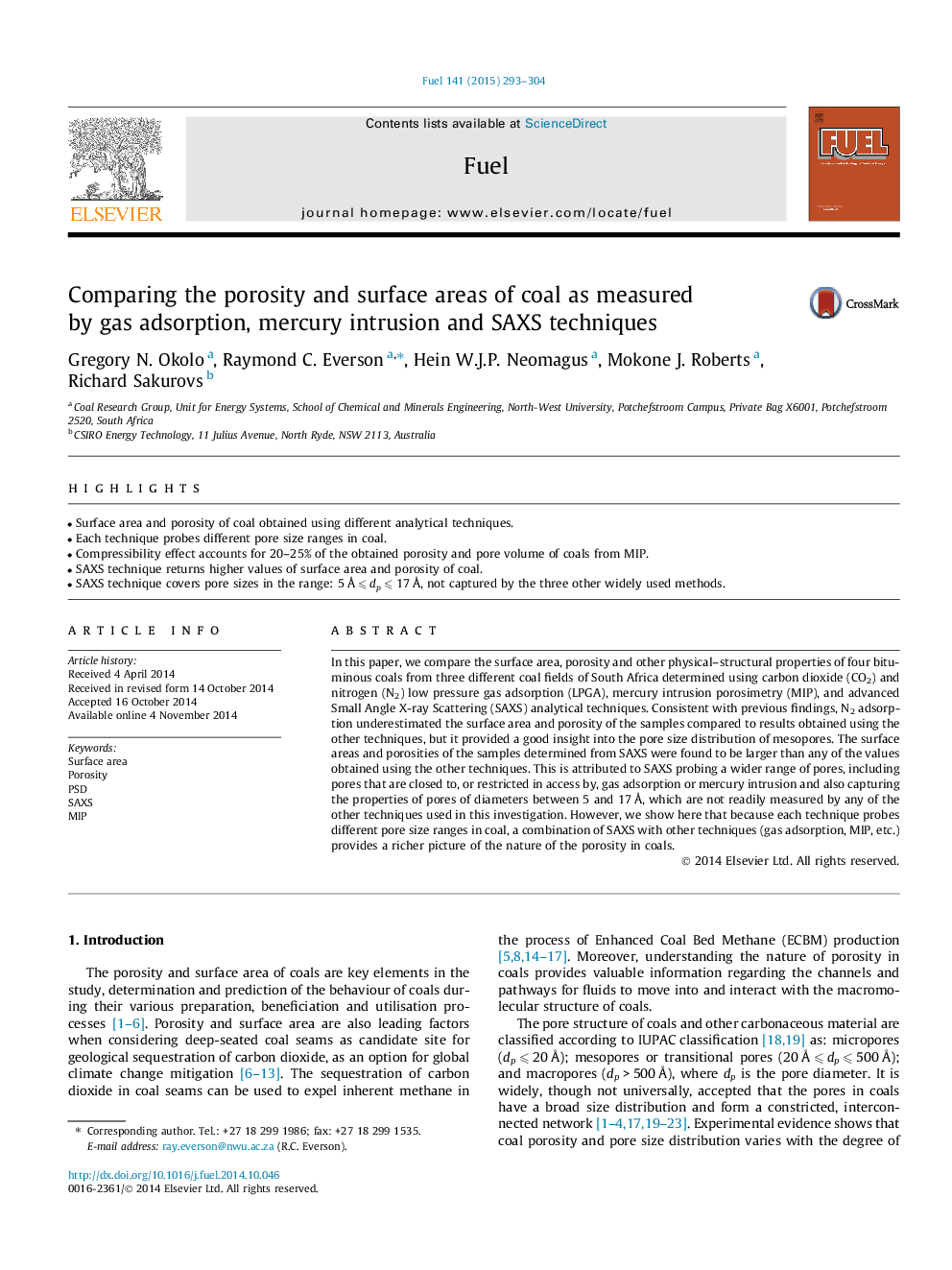| Article ID | Journal | Published Year | Pages | File Type |
|---|---|---|---|---|
| 205901 | Fuel | 2015 | 12 Pages |
•Surface area and porosity of coal obtained using different analytical techniques.•Each technique probes different pore size ranges in coal.•Compressibility effect accounts for 20–25% of the obtained porosity and pore volume of coals from MIP.•SAXS technique returns higher values of surface area and porosity of coal.•SAXS technique covers pore sizes in the range: 5 Å ⩽ dp ⩽ 17 Å, not captured by the three other widely used methods.
In this paper, we compare the surface area, porosity and other physical–structural properties of four bituminous coals from three different coal fields of South Africa determined using carbon dioxide (CO2) and nitrogen (N2) low pressure gas adsorption (LPGA), mercury intrusion porosimetry (MIP), and advanced Small Angle X-ray Scattering (SAXS) analytical techniques. Consistent with previous findings, N2 adsorption underestimated the surface area and porosity of the samples compared to results obtained using the other techniques, but it provided a good insight into the pore size distribution of mesopores. The surface areas and porosities of the samples determined from SAXS were found to be larger than any of the values obtained using the other techniques. This is attributed to SAXS probing a wider range of pores, including pores that are closed to, or restricted in access by, gas adsorption or mercury intrusion and also capturing the properties of pores of diameters between 5 and 17 Å, which are not readily measured by any of the other techniques used in this investigation. However, we show here that because each technique probes different pore size ranges in coal, a combination of SAXS with other techniques (gas adsorption, MIP, etc.) provides a richer picture of the nature of the porosity in coals.
